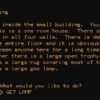What makes one person more creative than another? Creativity is hard to define and perhaps even more difficult to measure, but scientists think they’ve come up with a remarkably simple way of assessing at least one aspect of it.
It’s a test that you can take yourself in a couple of minutes, and it works best when you don’t know much about how the analysis works. Head over to the project page to give it a go, and then come back to read all about it.
The new method, called the Divergent Association Task (DAT), asks people to name 10 nouns that are as far apart in meaning as possible. “Cat” and “book” would be more divergent than “cat” and “dog”, for example.
A computer algorithm then measures this semantic distance – how much the two words have to do with each other – between the nouns the person came up with. Based on an analysis of responses from 8,914 volunteers, DAT is at least as good as current methods for predicting creativity in a person.
“Several theories posit that creative people are able to generate more divergent ideas,” write the researchers in their published paper. “If this is correct, simply naming unrelated words and then measuring the semantic distance between them could serve as an objective measure of divergent thinking.”
The Alternative Uses Task (where you think of as many uses as possible for an object) and the Bridge-the-Associative Gap Task (where you try and link two words with a third word) are the two existing measures of creativity that DAT went up against.
The creativity scores from DAT correlated as well with the other scores as they did with one another, implying it’s about as useful at assessing creativity as more complicated tools. What’s more, the data show that its effectiveness seems to apply across different demographics, making it suitable for large-scale surveys.
The key benefits of the new DAT test are that it’s simple and quick to complete, and doesn’t require any kind of human assessment, which might introduce bias. However, the researchers are keen to point out that it doesn’t measure every aspect of creativity.
“Our task measures only a sliver of one type of creativity,” says psychologist Jay Olson, from Harvard University.
“But these findings enable creativity assessments across larger and more diverse samples with less bias, which will ultimately help us better understand this fundamental human ability.”
As Olson points out to CNN, the DAT test explores divergent thinking and verbal creativity – it won’t show how creative you might be when cooking in the kitchen for example, which uses a different set of skills, but it can predict aptitude at certain problem-solving tasks.
Psychologists think that more creative people are able to link remote elements together in their minds more easily, which is what’s being tested here. A more comprehensive measure would have to also take into account achievements in creative fields, such as music composition and inventions.
It’s a complex picture – but the DAT approach might make carrying out future studies into creativity just a little bit simpler.
“Creativity is fundamental to human life,” says Olson. “The more we understand its complexity, the better we can foster creativity in all its forms.”
The research has been published in PNAS.



